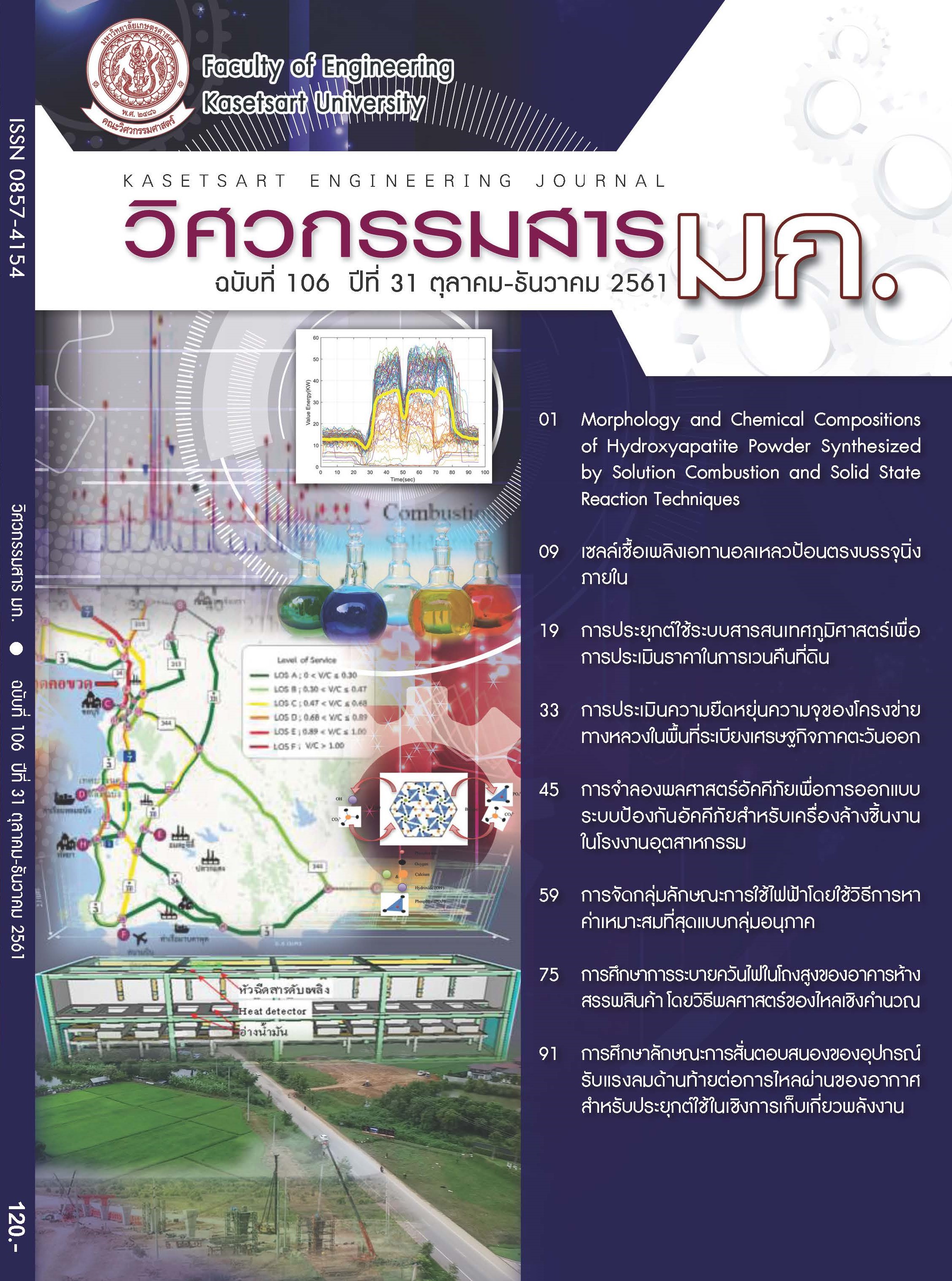Morphology and Chemical Compositions of Hydroxyapatite Powder Synthesized by Solution Combustion and Solid State Reaction Techniques
Keywords:
hydroxyapatite, combustion synthesis, solid-state reaction, crystallinity, morphologyAbstract
Hydroxyapatite (HAp) has been widely recognized as a biomaterial for repairing or substituting human hard tissues such as scaffolds and artificial bones. To utilize hydroxyapatite in practical applications, desired chemical compositions, and crystal structure, and microstructure are required. Hydroxyapatite is generally obtained from porcine bones and through chemical synthesis. The aim of this study was to synthesize hydroxyapatite powder by solution combustion and solid-state reaction techniques, and to examine the effects of synthesis techniques on chemical compositions, crystallinity, crystal structure, size and morphology of the synthesized powders. Experimental results revealed that hydroxyapatite was presented as the main phase in the synthesized powders, along with biocompatible β-tricalcium phosphate (β-TCP) phase. An additional phase corresponding to calcium oxide was evident in the powders synthesized by solid-state reaction. The results also revealed that synthesis techniques had apparent effects on structure and microstructure of the powders. While the solution combustion technique was able to produce finer platelet B-type hydroxyapatite powders of lower crystallinity, the solidstate reaction technique produced coarser spherical A-type hydroxy-apatite powders of higher crystallinity.


